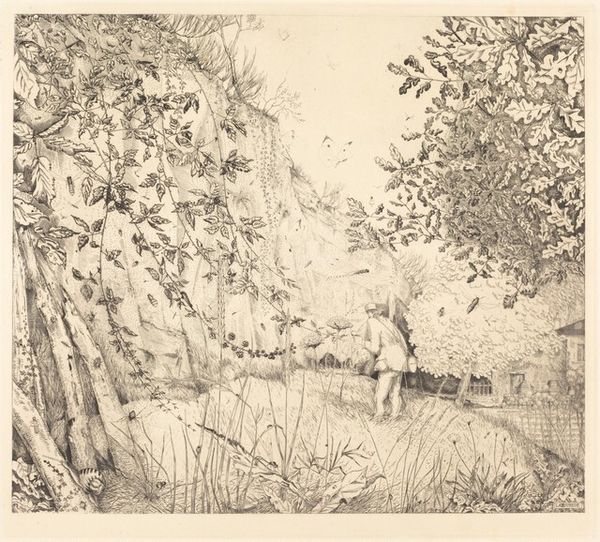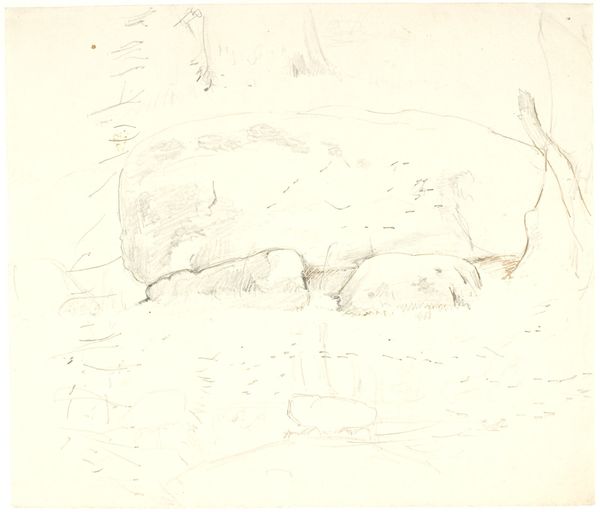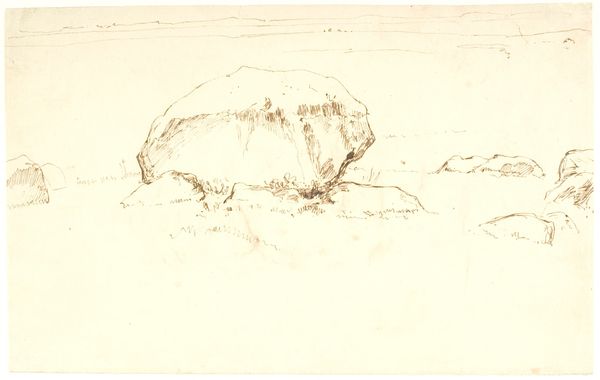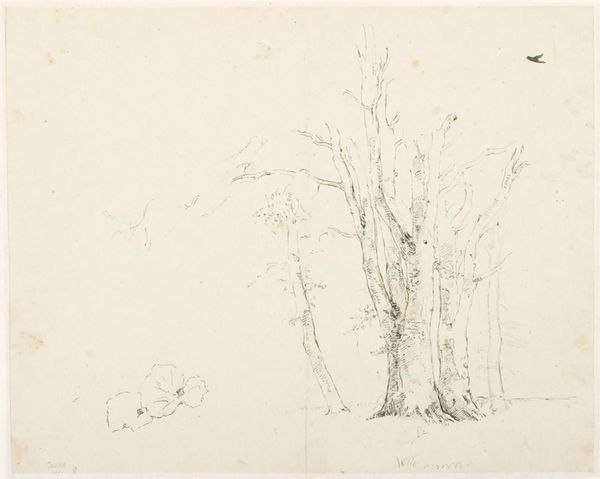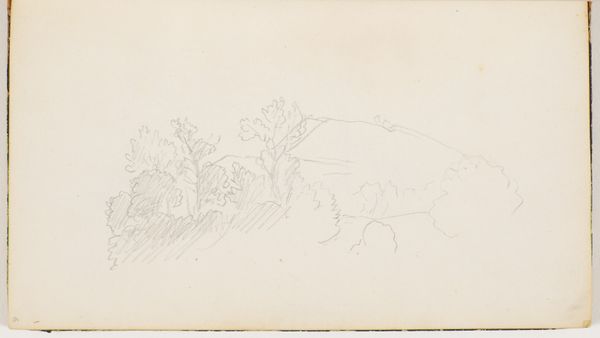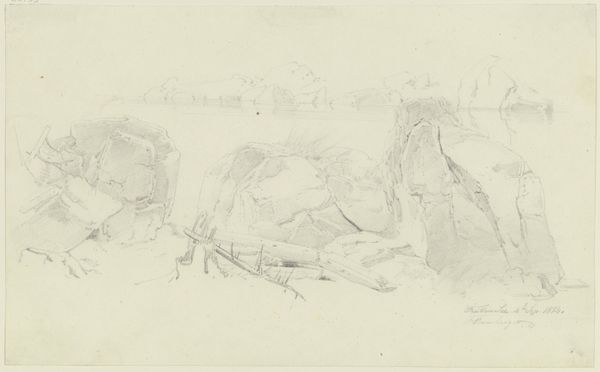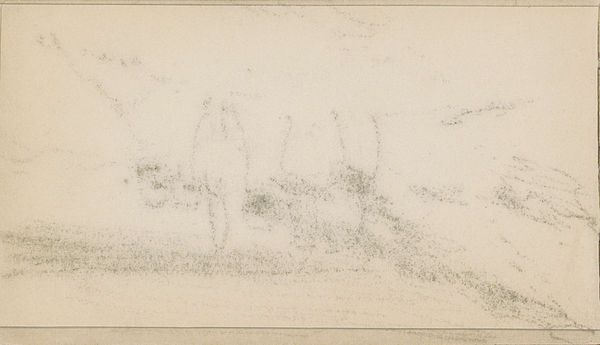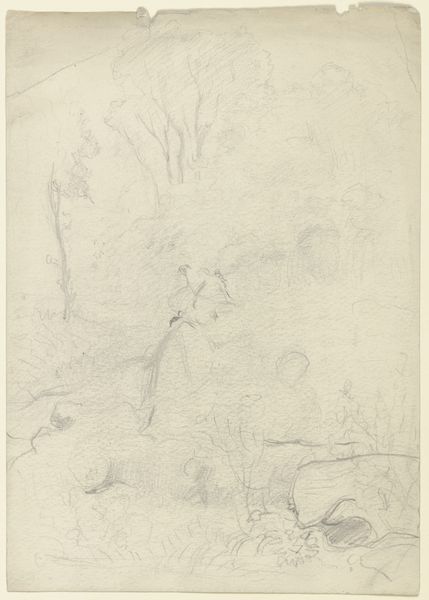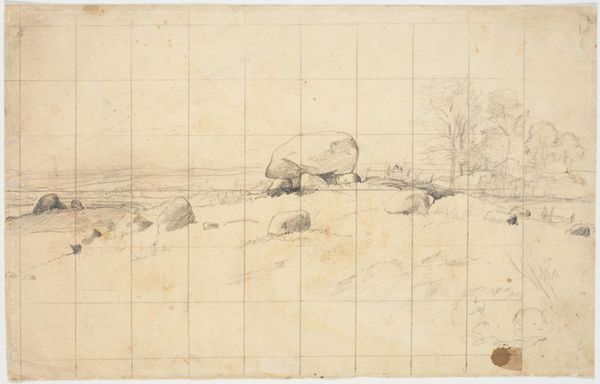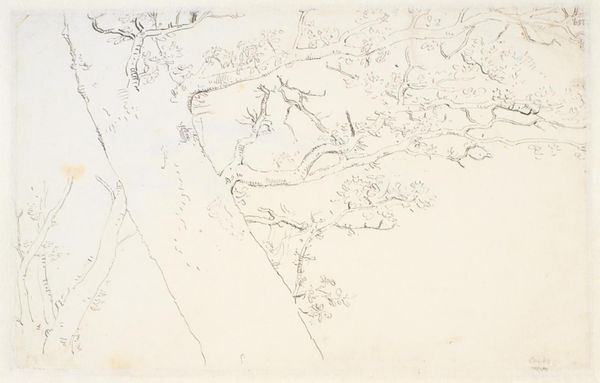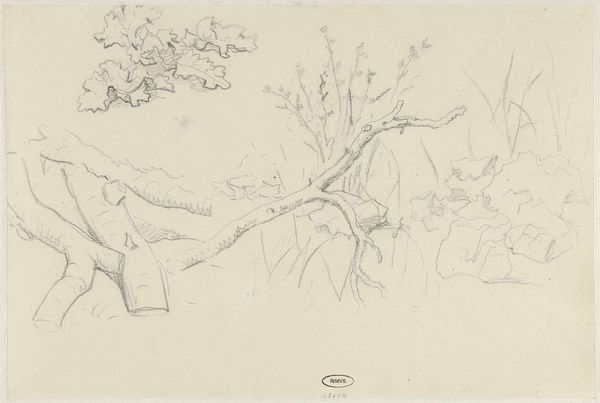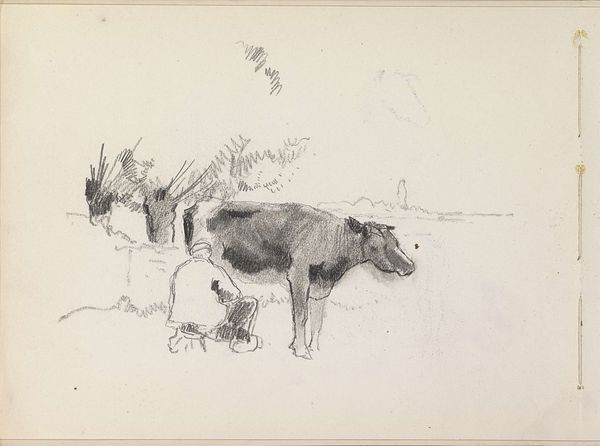
drawing, watercolor, ink
#
drawing
#
water colours
#
ink painting
#
landscape
#
watercolor
#
ink
#
romanticism
#
watercolour illustration
#
watercolor
Dimensions: 206 mm (height) x 327 mm (width) (bladmaal)
Editor: So, this is "Kæmpehøj på Brandsø" – that translates to "Giant's Grave on Brandsø" – by Dankvart Dreyer, created in 1842 using ink and watercolor. The drawing has a somewhat… archaeological feel? Like a record of something found or observed. What catches your eye about it? Curator: It's fascinating how Dreyer frames the ancient burial mound. We're not just looking at a landscape; we're observing a cultural landscape shaped by both natural and human forces. Think about what "romanticism" meant at the time – this yearning for the past, the idealization of nature as a repository of history and identity, all emerging alongside a burgeoning Danish nationalism. Does the medium – watercolor – also inform your understanding? Editor: Definitely. Watercolor feels less formal, more immediate, almost like a sketch taken on site. So, is Dreyer trying to legitimize a certain narrative through the "authenticity" of this approach? Curator: Precisely! He’s participating in constructing a national identity, lending an aesthetic authority to a specific vision of Danish history. And notice how the mound is situated in the landscape, almost like a character within it. It's not merely a topographical feature. Who was the intended audience? And in which exhibition context would they meet Dreyer's "Giant Grave?" Editor: That’s such a good point. It really puts into perspective how much these artistic choices are shaped by the socio-political context. Curator: Indeed. Art serves a public function; even seemingly simple landscapes carry encoded messages about heritage, power, and belonging. It highlights the complex relationship between the romantic ideal and the emerging institutions shaping cultural identity. Editor: This makes me appreciate the work beyond just its aesthetic value. Curator: Exactly, recognizing its contribution to how Denmark envisioned itself at the time is eye-opening.
Comments
No comments
Be the first to comment and join the conversation on the ultimate creative platform.
